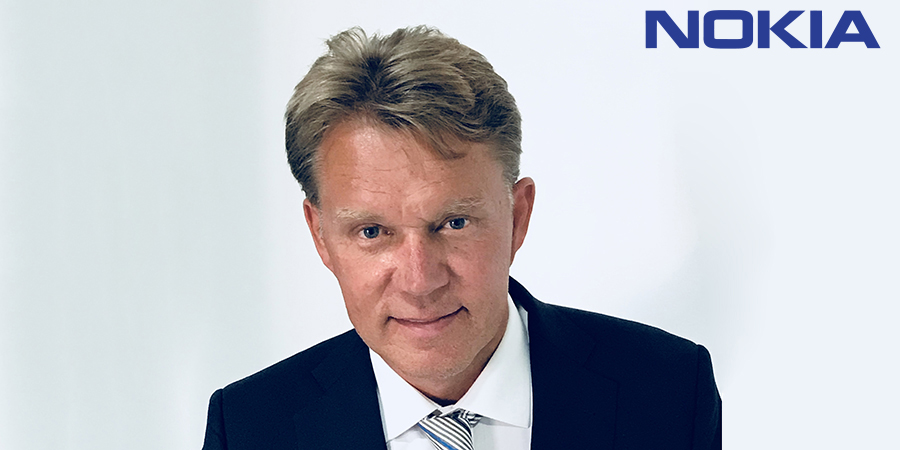Following the launch of Nokia’s latest generation of Airscale radio, massive MIMO antenna and baseband products, Petri Moilanen, mobile networks MEA director of sales, Nokia explained in an exclusive interview with Telecom Review about the recent products launch and the main differentiating features.
Nokia has recently launched a new generation of AirScale radio, massive MIMO antenna and baseband products. Can you give us a brief overview on the products and why did Nokia decide on launching them now?
After the initial launches of 5G around two years ago and as the technology and marketplace have begun to mature, there has been a need to enhance the network performance to fulfil the increasing demand for more capacity. Initially there was only a limited need to support more than 100 MHz bandwidth, but as more spectrum was made available, some operators have increased their in-band spectrum assets and new requirements have emerged. Operators must keep their solution efficient, so it’s essential to have a single antenna that can support sufficient bandwidth and avoid the need to add another one to cover the new spectrum allocation.
Also, what we have witnessed with some of our own Nokia 5G references is that operators are looking to lower the costs of their market entry, through the adoption of RAN sharing, which also drives the need for a single antenna to support wider bandwidth while reducing the amount of equipment deployed, the costs of network rollout and the operation cost.
At the time the first 5G networks started to become commercial (April 2019), component and technology limitations made the design of practicable wideband radio platforms a challenge. For example, the RF power amplifier technology necessary to support the wide RF bandwidth [of say band n78, 3.4 GHz to 3.8 GHz) and performance to comply with 3GPP specifications was not possible. Similarly, with the introduction of 5G came the use of new spectrum bands. These are at higher frequencies and much wider RF bandwidths than previously used by mobile networks.
Hence, in order to help our customers cope with all this increasing 5G capacity, spectrum demand and deployment options, we have launched a new generation of AirScale Massive MIMO antennas and remote radio heads, as well as a new generation of AirScale baseband plug-in cards. And we expanded the single RAN capability to include 5G based on the new products. All of these are powered by the latest Nokia ReefShark SoC technology.
What value will the new generation of AirScale products for 5G deliver to telecom operators across the Middle East and Africa market?
The new AirScale solutions help mobile operators scale up their network capacity for 5G (and 2G, 3G, 4G) – flexibly, efficiently and at a reduced TCO. All new products are enabled by ReefShark SoCs (System on Chip) of the latest generation. The products were designed to support higher capacity and scalability, wider spectrum and shared infrastructure while lowering energy consumption.
Nokia launched the world’s lightest massive MIMO antenna, weighing just 17kg, without compromising on bandwidth or RF output power. And we don’t sacrifice performance for weight. In fact, our new 17kg light AirScale massive MIMO antenna supports 400 MHz RF bandwidth (400 MHz IBW and 200 MHz OBW) necessary to support the highly popular 3GPP frequency band n78 (3.4GHz to 3.8GHz), with up to 240W RF output power.
In addition, we also launched our new AirScale baseband card which is the world’s most integrated 5G and Single RAN baseband, up to 8-times the capacity and number of cells of the previous generation and can reduce power consumption by up to 75%.
The common Single-RAN software for 2G, 3G, 4G and 5G cuts RAN TCO significantly, it also supports multimode, multiband and eCPRI/CPRI fronthaul on a single baseband platform.
Early analysis pointed to TCO reductions of about 30%, thanks to common operability, common software delivery, common transport and an increased level of hardware sharing.
One of the most important features of the 32TRX and 64TRX massive MIMO offerings is weight. Why is weight so important?
Weight affects the ease and cost of network deployment. From an operator perspective it is a major consideration. Operators aim to roll out their 5G networks, indeed all networks, as efficiently and as quickly as possible. Doing this requires solutions that offer deployment flexibility, that’s to say how an antenna or radio can be mounted, as well as the ease of the deployment itself. Understandably, a solution that can readily be installed by one person rather than a team of people, or worse still one that requires a crane to install it, is highly desirable, as it reduces resources, the efforts required and ultimately the cost.
Moreover, the weight directly affects the load on the mast/tower that must be maintained within the design limits of the supporting structure. If the limits are approached or exceeded, it will be necessary to either strengthen or replace the structure – a time consuming, costly, and disruptive exercise that must be avoided whenever possible.
Can you update us on progress with ReefShark? When will all configurations rely fully on ReefShark SoCs?
Custom silicon has an essential role in our strategy and expanding the use of our ReefShark custom silicon improves base station capacity and connectivity and reduces the product cost and power consumption. We have optimized the design and processing functions in the SoCs. Nokia’s own IP (Intellectual Property) blocks make ReefShark SoCs unique. We work with leading SoC houses to ensure use of latest silicon technology. We have tripled our R&D workforce in ReefShark SoC development and continue hiring.
In Q3 2020, 37% of 5G shipments were powered by ReefShark. We continue to track well against our targets: 43% by year end 2020 (beating the target of 35%) and approximately 70% by end of 2021. In 2022, the transition will be complete. And we have already the next generation SoC’s in the works, in addition to the ones we have already.











